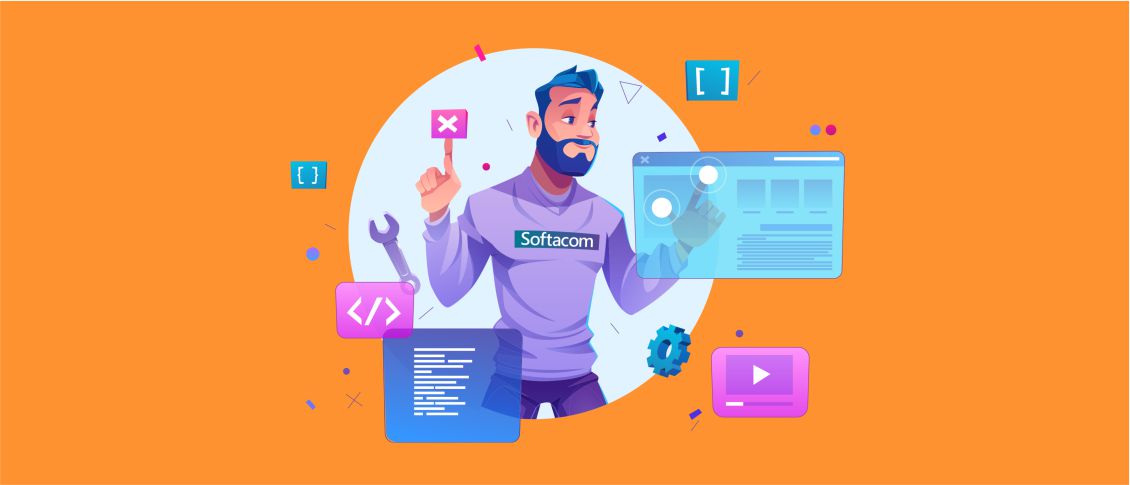Overview
Let’s admit that even if you have the best software ever, with the passing of time, it may (and it will) lose its positions. Why? The explanation is more than simple. The market is always being influenced by the demands of customers. As a result, businesses need to adapt to these constantly changing conditions. But don’t you think that these changes should be reflected in your software as well? Moreover, you shouldn’t ignore the fact that technologies are continuously developing, which can help you to make your apps even better than they are at the current moment.
However, as you may have already understood, in many situations creating new software doesn’t seem to be a very cost-efficient solution. That’s why we can offer you such an option as software re-engineering.
Software re engineering vs. software development
Before you make a decision whether you need this or that product or service, you need to understand quite clearly what it represents itself. So, let us explain to you why we believe in the power of software reengineering and why we separate it from such a wider and more common notion as software development.
The core difference is that when we are speaking about ordinary development, we are speaking about creating a product from scratch. At the very beginning, you have nothing, and as a result, you have a product. In the case of re-engineering, we have legacy software.
It means that as a result, you will have your existing product which will become more effective and efficient.
Legacy software re-engineering presupposes that the current functionality will be either fully saved or slightly modified after your software will be upgraded or migrated to a more up-to-date and innovative tech platform.
As a result, your software will overcome the existing issues caused by the changed market expectations, will have higher performance and will be absolutely modern and up-to-date.
Software re-engineering vs. software enhancement
At this very moment, you may have a desire to ask us whether we are speaking about software enhancement. Though the latter has some similar features and aims with reengineering, for us, they are not just the same.
In our opinion, enhancement is the process of introducing modifications after the product is already delivered with a view to correcting some errors, improving or adding some attributes.
Software enhancement is more about functionality and attributes that can be modified, upgraded, added or removed, while re-engineering is more about the technology itself.
When and why you should turn to software re-engineering
Re-engineering has the final aim to improve the quality of your software which can help you to add value to your product and even increase your income.
Customers always have some expectations based on the current market conditions as well as on other existing offers. That’s why we always pay special attention to such aspects as UI and performance of your software which are the main aspects to be evaluated by users.
Here you are just a couple of cases when you should turn to software re-engineering:
- When the technology used to create your software has been seriously modified;
- When there is a necessity to migrate your app to another more advanced platform;
- When you are not satisfied with the functionality of your software;
- When you have introduced changes to your business processes.
What benefits would you get opting for re-engineering?
- Increased productivity and enhanced performance of your software;
- Upgraded functionality (New features and functions can be added as well as removed);
- Reduction of risk (When you order the development of a new app, it can be risky, as you never know what you will get as a result and whether this new product will meet your expectations. When you choose an option of upgrading an existing system, you know what to expect.);
- Saving of time (For upgrading a system, much less time is needed than for creating an app from scratch).
Stages of re-engineering
The process of re-engineering may be organized in the following way:
- Audit;
- Business analysis;
- Setting of quantitative and qualitative goals;
- Design of architecture of the components to be re-engineered;
- Development of initial test cases;
- Testing of the upgraded architecture;
- Implementation;
- Functional testing of a new version of the software;
- Compliance testing of software.
Software re-engineering: Real-life application
Though the real demand for re-engineering has extremely grown in the recent years, which is explained by the huge progress made in the sphere of tech development, the first work on this topic was published in 1990. Since then, more and more developers and software engineers started to consider this method and analyze its benefits.
As for the real numbers, a study conducted at Montana State University has shown that software maintain costs grow with the years of using this or that product. As a result, maintenance may require up to 90% of all development costs and 50-80% of total development time. So, if you are not going to bring your business to an end in the near future, it may be much more cost-efficient to allocate money for software re-engineering in order to save the funds that you may have spent on maintenance.
According to the statistics, re-engineering may help you to save up to 150-200% of the money that you need to invest in your software.
Just imagine: thanks to re-engineering the research project that was under consideration got an opportunity to save over $500,000 within 5 years.









